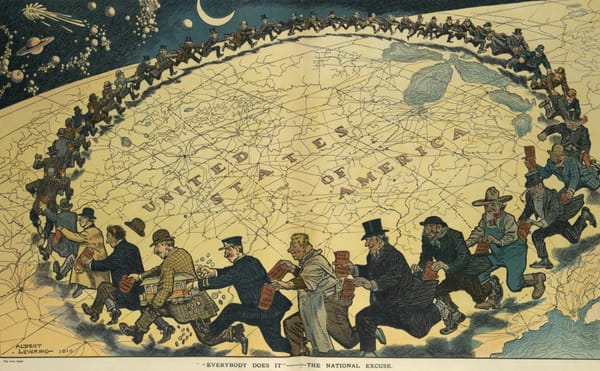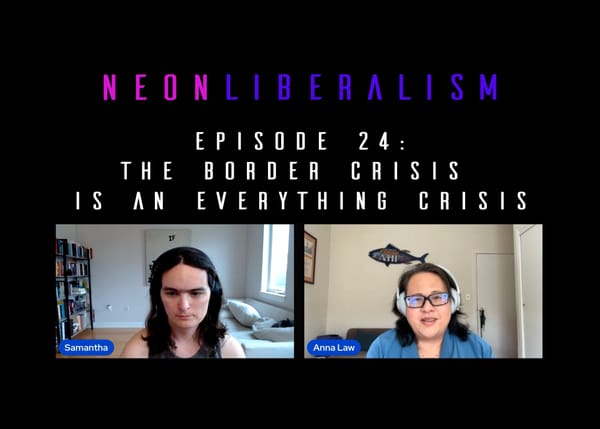A Fraught and Narrow Corridor for Liberty

In The Narrow Corridor, with impressive historical breadth, Daron Acemoglu and James Robinson (hereafter A&R) develop and apply a conceptual framework to explain the emergence, sustenance, and, all too often, disappearance, of liberty. It is a serious, important and wide-ranging scholarly effort. Narrative histories provide the empirical grist for A&R’s theories. The accounts of emancipation are inspiring. The accounts of the gradual (and then sudden) destruction of liberty are terrifying. With these histories in mind, the “narrow corridor” argues for a simple but flexible model of elite-society conflicts to understand a range of political outcomes and dynamics, from the state of nature, to state formation, to growing state capacity, to emancipation, to despotism, to state failure. It is, for the most part, a persuasive and practical framework. However, at times A&R’s central model proves too coarse for the fine-grained history they describe. In particular, their framework would be more compelling with a greater focus on the role of factional conflict within society as an enduring threat to liberty and constitutional governance.
How to shackle a leviathan
In A&R’s theory the emergence of liberty depends on a delicate balance of power between the state and society. States that have too much power over society are tyrannical (the Despotic Leviathan). Societies that are unwilling or unable to cede authority to centralized states remain subject to more localized tyrannies through patriarchies, clans and repressive norms (the Absent Leviathan). In contrast, liberty emerges when societies allow a state to form through some centralized authority (or elites allow state power to become more decentralized and constrained) and remain vigilant and organized in order to pressure the state to remain within its bounds (the Shackled Leviathan). This Shackled Leviathan creates liberty’s “narrow corridor”—a corridor that is extraordinarily difficult to enter and almost as difficult to remain inside.
The Shackled Leviathan should sound familiar to students of political and constitutional theory. Popular sovereignty, the rule of law, the separation of powers, and enumerated rights (in particular freedom of speech and association) are all elements of a Shackled Leviathan. But A&R argue—quite rightly—that these are merely characteristics, almost tautological, of the Shackled Leviathan, they do not help us understand why or how Leviathan remains shackled. In their theory, Leviathan remains shackled when norms (like a proclivity to protest government abuses) and facilitating institutional mechanisms (like representative legislatures) encourage citizens and non-state groups to hold states accountable for adhering to the scope and scale of public authorities codified in constitution and in law.
While the emergence of liberty and accountable government initiates profound changes in the state and society, it is not a terminus, but rather continues a push and pull dynamic between state and society. A&R call this dynamic the Red Queen effect, a metaphor they return to repeatedly. The Red Queen refers to the character in Through the Looking Glass that explains to Alice that she needs to keep running faster and faster in order to stay in one place. According to this key implication of their theory, in order to sustain liberty society must continually become more active and vigilant in monitoring and engaging with the state while the state must become proportionately more capable to meet rising expectations. In a virtuous version of this cycle, society is demanding and vocal, which holds the state accountable and drives it to improve its capabilities. As state capabilities increase elites become more willing to expand participation of previously marginalized groups in society. However, if state power expands more rapidly than society’s capacity or inclination to hold it accountable, the state will become more dominated by elites and more despotic. If state capacity falls short of society’s demands, a different vicious cycle can begin in which citizens are willing to grant less power and fewer resources to the state, which ultimately undermines the ability of the state to carry out its responsibilities or improve its capacity. Society’s skepticism of state power has a self-fulfilling effect that reduces state capacity and thereby confirms society’s initial skepticism. In the extreme, the state loses legitimacy and can no longer effectively provide critical services, including public safety and dispute resolution.
To stay in the corridor, in A&R’s view, the state must become larger and more capable. And to keep up society must develop new and better mechanisms to monitor state activities and push back against corruption and abuse of power.
A house divided
At times the Red Queen metaphor becomes rather strained. The Red Queen effect getting “out of control” is offered as an explanation for nearly every form of state-society dysfunction. This gets to the incompleteness of A&R’s conceptual framework. That is, it is right to view liberal polities as fragile but incomplete to imagine that the conflict which jeopardizes liberty is always between an expanding, monolithic state and an aggressive, monolithic society. On the contrary, the explanatory power of A&R’s theory would be meaningfully enriched with the inclusion of factional conflict over finite state power. To be clear, A&R recognize that society is not homogeneous and discuss instances where cleavages within society helped force nations out of the narrow corridor (Weimar Germany, Allende’s Chile) or where cleavages in society were overcome when nations entered the corridor (Mandela’s South Africa). Social science is about developing models of complex phenomena, and all good models are abstractions that by necessity and intentionally focus on a narrower set of conditions to explain a narrower set of outcomes. The building blocks that A&R have developed are a historically grounded and analytically useful foundation. It should be productive to explore the implications of conflict between societal factions as an extension of the model offered in The Narrow Corridor.
Identification with and membership in ethnic, regional, cultural, religious, economic, and other communities is a natural and vital aspect of human society. Nevertheless, these memberships and identities, when overriding and exclusive, can pose challenges for democracy and liberty. This consequence of factionalism has been the subject of some concern in the history of political philosophy. James Madison characterized the “mischiefs of faction” as “some common impulse of passion, or of interest, adversed to the rights of other citizens, or to the permanent and aggregate interests of the community.” These factional identities create existential risks for liberty, according to Madison, because the causes are “sown in the nature of man” and have “divided mankind into parties, inflamed them with mutual animosity, and rendered them much more disposed to vex and oppress each other than to cooperate for their common good.” Madison’s view likely relied upon a longer tradition that found expression in Adam Smith and David Hume. Smith bluntly stated that “[of] all the corrupters of moral sentiments…faction and fanaticism have always been by far the greatest.” Hume similarly believed that “the influence of faction is directly contrary to that of laws. Factions subvert government, render laws impotent, and beget the fiercest animosities among men of the same nation, who ought to give mutual assistance and protection to each other.” In essence, if factional affinities are viewed as in conflict with national, civic obligations then those affinities could undermine the rule of law and other key benefits of the narrow corridor. Moreover, intense factional rivalries reduce the inclination to compromise with other factions and challenge the belief that these factions are legitimate beneficiaries of public services and private liberties.
In contrast to A&R’s Red Queen effect, in which state and society are in the race, contests between factions of society that seek to co-opt state power are perhaps equally consequential, and occur while state capacity remains static or even declines. These well known interest group dynamics can be relatively benign, for example shifting modest quantities of state resources to narrow interest groups or shaping legislative agendas to factional preferences. A&R also describe in a number of historical episodes, such as Weimar Germany, how these factional dynamics can become more pernicious, greatly undermining state capacity to fairly adjudicate disputes across factional boundaries or to provide public services to certain factions. When factional identities override shared civic and constitutional norms this dynamic can set off a vicious cycle, not unlike A&R’s “out of control” Red Queen, where a weakened state loses legitimacy among factions out of power, which then refuse to recognize the authority of the state or invest resources in holding the state accountable.
In the extreme, factional identities become so dominant that the idea of adhering to constitutional rules that would require sharing power with other factions becomes anathema. A&R argue that competition between an elite-dominated state and society can be viewed as zero sum, dramatically reducing the perceived gains from cooperation. However, the use of “elites” and “the state” often interchangeably in The Narrow Corridor can obscure important changes in the nature of the state once it enters the corridor and thereby becomes less dominated by elites. Moreover, once society has more direct influence over state functions, societal factions need not struggle merely with elites for power.
Instead, for the nations crashing out of the narrow corridor that A&R describe, societal factions began to engage in zero sum competition over what they viewed as worryingly finite economic and state resources. Society’s capacity to hold the state accountable, prevent elites from taking over state functions, and shackle the Leviathan, depends on its ability to work together. Among intense factional identities, society’s ultimate interest in holding the state accountable becomes secondary to more proximate factional conflicts. A&R focus on threats to elite economic interest as driving zero sum state-society conflicts. Factors that heighten divisions within society—and engender a sense of zero sum competition across factions—are likely to be more varied, including economic scarcity, threats to cultural hegemony, and insecurity. Elite framing can also influence the nature and degree of the threats that individuals and factions perceive.
Coalitions for liberty
Factional conflict is not guaranteed to escalate nor are factional identities destined to undermine constitutional norms. An individual’s factional identity is not unitary and unchanging—at any time, they may hold many different and overlapping factional attachments which vary in salience and intensity depending on context, and can shift over time. A&R’s discussion of the role of broad coalitions—across entrenched and distinct factions—in entering or staying in the narrow corridor provides much useful insight into bridging factional divides. These broad coalitions have a number of key elements. They reach across traditional factional cleavages, including parties from both the right and left, different religious or ethnic groups, and they encompass both labor and business interests. Successful coalition formation hinges on recognizing the need for compromise and following through on commitments. These compromises then produce tangible gains for all parties, which sustain the coalition. The experience of Sweden’s Social Democrats is used by A&R to illustrate the breadth of coalition membership—including business, farmers, and trade unions—and the types of policies that hold coalitions together. In general, they argue that coalitions are held together by policy compromises that promote a fair distribution of resources across coalition partners while enhancing the capacity of society to monitor state activities. In the Swedish case the essential components of the bargain were universal social benefits, centralized wage setting, and the formal involvement of trade unions in monitoring the implementation of the compromise. A&R also emphasize that broad coalitions protect against more extreme policies like nationalization and expropriation that would undermine core incentives for economic activity and force the collapse of the coalition.
In addition to achieving the legitimate aims of coalition partners, effective compromises have the ancillary effect of sustaining liberty and constitutional norms. Gains achieved through such compromises reinforce the legitimacy and perceived effectiveness of the constitutional system, which, in a virtuous cycle, encourages further productive compromise and cooperation. To be clear, there are hard limits on just and acceptable compromise. Coalitions that exist for the preservation of liberty cannot be sustained by trading away fundamental liberties nor can they include factions deeply hostile to liberty for the imagined purpose of civilizing or tempering their illiberal aims.
A&R recognize the contemporary challenges posed by autocratic movements, polarization, and mistrust of institutions. Polarization is the enemy of broad coalitions. When polarization is acute, factions fear conceding to any of the preferences of opposing factions, or fear that competing factions will abuse any shared public authority. Like the precarious balance between state and society that A&R emphasize, these coalitions can also be fragile. A&R once again rely on the experience of the Social Democrats in Sweden to understand how one might effectively respond to coalition fragility driven by contemporary polarization. They highlight the role of coalition breadth, comprehensive economic responses, and political reforms to increase capacity of individuals and coalition members to monitor the state, while recognizing that “the Swedish success…should not be read as a recommendation that other countries blindly emulate and copy the details.” Two months after Narrow Corridor was published, the Swedish consensus looked even more fragile. Other policy prescriptions offered in response to these challenges, such as campaign finance reform and civil service reform, feel overly precise and less well grounded in theory or historical experience. It is as yet far from well understood what might make these coalitions sufficiently resilient, or whether (or how) they will weather the current global surge in populist, nationalist, and authoritarian sentiments. Without a deeper understanding of relations among factions, the narrow corridor and the Red Queen cannot tell us much more about what causes some coalitions to disintegrate while others might adapt and endure.
Scholarship at the intersection of pluralism and liberalism has wrestled with these questions. For example, Richard Bellamy argues that factions should not view compromise as a kind of Hayekian market where other factions are merely constraints on the set of feasible choices, but rather should view the desires and aspirations of other factions as legitimate. Bellamy contends that this change in perspective should produce more broadly acceptable and stable compromises. Such compromises would be conducive to the broad coalitions that A&R emphasize. Nevertheless, these cooperative efforts face substantial hurdles. Over time, individuals may become less sympathetic to liberty and constitutional norms, while factions may become less interested in holding the state accountable and more interested in securing public benefits that accrue only to faction members. Even where A&R’s prescriptions for these ailments are not as compelling as their theoretical foundations, they have created a language and framework to the benefit of future efforts to take on these challenges. Their work also points toward productive avenues for finding solutions, in particular toward norms, policies and institutional mechanisms that can secure gains and liberties shared across broad political coalitions.




